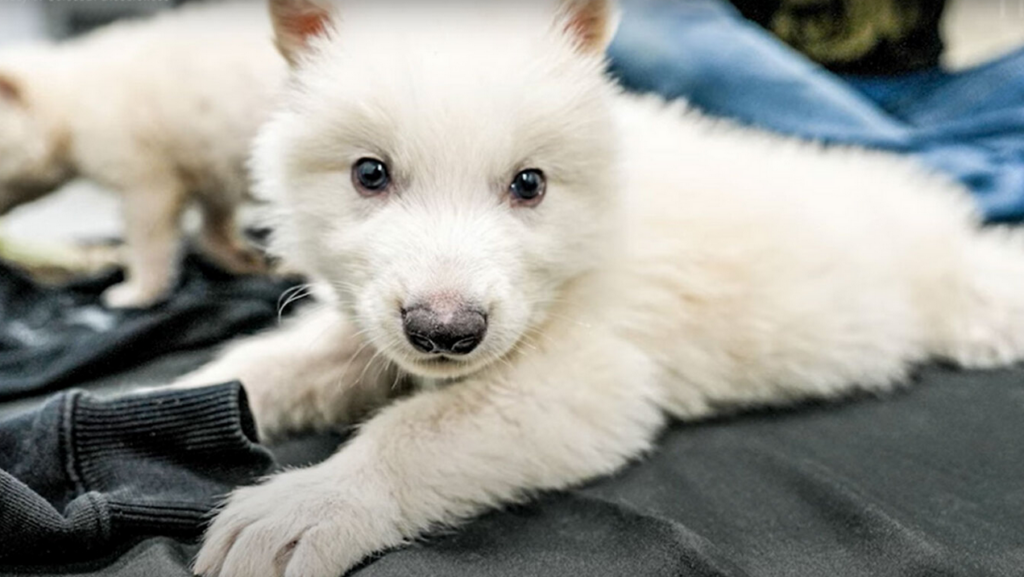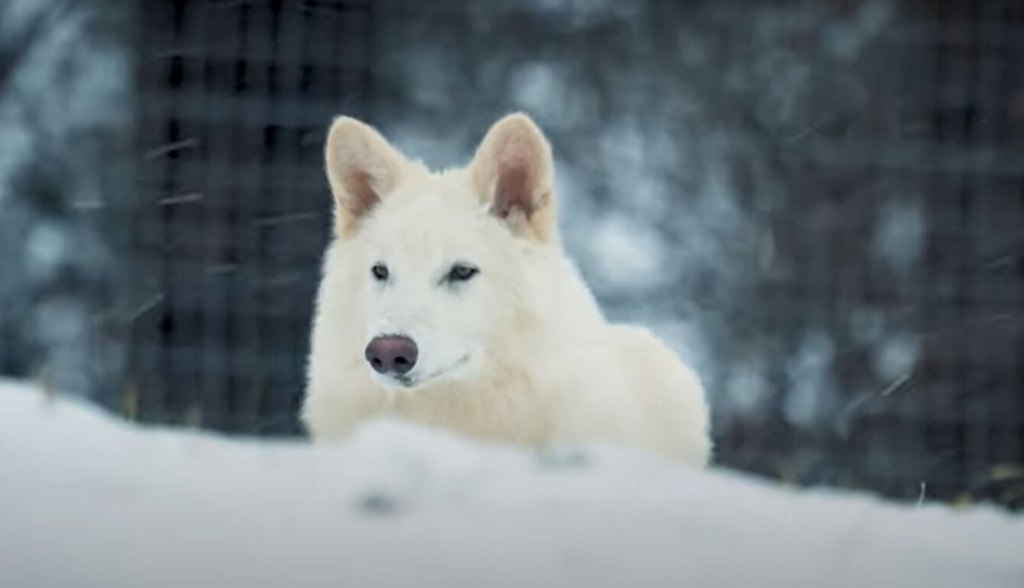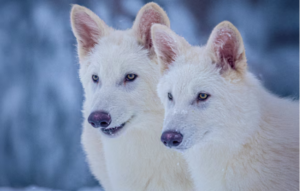The “resurrection” of extinct species, known in scientific circles as de-extinction, has been the target of many scientists around the world in recent years. But the company Colossal Biosciences claims to have made that goal a reality – or at least come close – by “resurrecting” the tribal dire wolf, a giant, extinct species made “famous” by the Game of Thrones series.
According to the New York Times, in 2021, a team of researchers have managed to recover DNA from anthropod fossils that disappeared some 13,000 years ago. With the help of the new samples, the Colossal science team modified 20 gray wolf genes to acquire key features of the Dire wolf.
They then created embryos from the modified cells, which were implanted into surrogate mothers (dogs) and waited for them to be born.
The result, as announced yesterday to worldwide sensation, is three cute little wolves – two six-month-old males and a two-month-old female, named Romulus, Romos and Kalishi respectively. The three creatures have several elements of the characteristic appearance of antral wolves: they are large, with dense, light-coloured fur, rare for the grey wolf species.
Colossal Biosciences houses the wolves on a large, private property in an undisclosed location in the northern U.S.
Colossal’s science program leader, Beth Shapiro, described the pups as the “first successful case of de-extinction”. “We are creating functional replicas of an animal that existed in some earlier time,” she said.
The three wolves will remain in captivity. However, the technological leap that their birth represents could help conserve endangered species, such as the North Carolina red wolf.

Who were the Dire wolf
In previous years, scientists had proposed various methods for reviving an extinct species. One of these involved the scenario of recovering an intact cell from the frozen carcass of a mammoth. In this case the cell could potentially be thawed and used to create a mammoth clone.
However, the entrepreneurs and scientists who founded Colossal in 2021 are taking a different approach. Through analysis of ancient DNA, they are identifying the basic mutations that made extinct species different from their living relatives. They then modify the DNA of a modern relative species and use those genes to produce viable creatures. These animals are not genetically identical to the extinct species, but are similar in several key characteristics.
The company had begun ambitious experiments with mammoths and dodos, but encountered difficulties: transferring embryos to elephants is an extremely complicated task, while for the dodo, technology had to be developed to place embryos in a hard-shelled egg.
In 2023, Colossal focused on the giraffe as a more “accessible” target due to its affinity with dogs. The original DNA came from a 13,000-year-old tooth from Ohio and a 72,000-year-old skull from Idaho.
Genetic analysis showed that the giraffes shared a common ancestry with the wolves, jackals and wild dogs of Africa found in the wild today. 4.5 million years ago they were cut off from the central “branch” of the family tree and merged again with ancestors of gray wolves and coyotes 2.6 million years ago.
Dire wolf were 25% larger in size than gray wolves, and possessed strong jaws and large teeth. They hunted horses, bison and – possibly – mammoths. They were the dominant predators in southern Canada and the USA, until their prey became significantly reduced – due to human hunting – leading to the extinction of their own species.
The process followed by the company
The scientists isolated grey wolf blood cells and processed the DNA, eventually inserting 15 of the 20 genes by mutating the antral cells they had prepared. The remaining 5, which have been associated with deafness and blindness, were replaced with disease-free variants.
“As a scientist, you have to be very careful,” says Dr. Shapiro. “You want to be able to revive these phenotypes, but you don’t want to do anything that will harm the animal.”
The edited DNA was transferred from gray wolf blood cells into dog eggs. After several failed attempts at gestation, four puppies were born, one of which died of intestinal perforation (which scientists say is not related to a genetic error).
Matt James, head of Colossal’s department that oversaw pregnancies and births, knew they had made it when he spotted the first puppy with white fur. “I saw the first white tuft and was shocked. I will never forget that moment.”

Are they really Dire wolves?
Adam Boyko, a professor of genetics at Cornell University who was not involved in the project, called it “exciting” that scientists can now create functional versions of extinct species.”
However, he does not consider Romulus, Remo and Kalisi to be true guerrilla wolves, like the ones that hunted the planet thousands of years ago. As he explains, the three pups are not raised in packs of Dire wolf to learn their behavior, nor do they follow an ancient diet, so they will not acquire the unique gut microflora of their ancestors.
Indeed, the animals carry 20 genes of the anthrax, which may reveal something about the biology of the extinct species. However, Dr. Boyko suggests that many more genes may have contributed to the differentiation of the Dire wolf from other wolves. “We don’t know what that number is,” he said. “It could be 20, it could be 2,000.”
Ask me anything
Explore related questions





